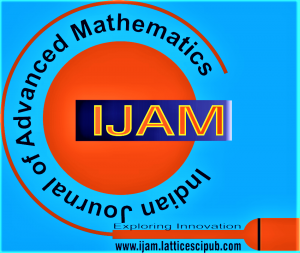![]()
Some Results on Specificity of Possibility Distributions
Jayesh V. Karanjgaonkar
Dr. Jayesh V. Karanjgaonkar, Assistant Professor, Department of Mathematics, Swami Aatmanand Govt. Eng. Med. Model College, Atari, Raipur (Chhattisgarh).
Manuscript received on 16 June 2025 | First Revised Manuscript received on 27 June 2025 | Second Revised Manuscript received on 16 September 2025 | Manuscript Accepted on 15 October 2025 | Manuscript published on 30 October 2025 | PP: 1-5 | Volume-5 Issue-2, October 2025 | Retrieval Number: 100.1/ijam.B120605021025 | DOI: 10.54105/ijam.B1206.05021025
Open Access | Editorial and Publishing Policies | Cite | Zenodo | OJS | Indexing and Abstracting
© The Authors. Published by Lattice Science Publication (LSP). This is an open-access article under the CC-BY-NC-ND license (http://creativecommons.org/licenses/by-nc-nd/4.0/)
Abstract: Specificity of a possibility distribution is akin to the entropy of a probability distribution. It serves an essential purpose to zero in on the maximum probability observation. However, when we discuss the existing definition of possibility distribution, it lacks applicability in real-world problems; hence, specificity also becomes an underrated measure for gauging the degree of uncertainty in a possibility distribution. In this paper, we present new findings on the specificity of a possibility distribution, resulting from our research on data-based semantic information analysis in hybrid human-machine systems. In this research, we propose a new frequency-based possibility and probability measure and formalise a new method for fitting restrictions on data or information available in the system. We will demonstrate that the proposed formula is superior to existing specificity measures and discuss various applications of specificity measures in solving problems related to hybrid systems. We shall summarise this paper by providing a real-world application of the proposed measure.
Keywords: Possibility Distribution, Restriction, Specificity, Hybrid System, Semantic Information.
Scope of the Article: Applied Mathematics
